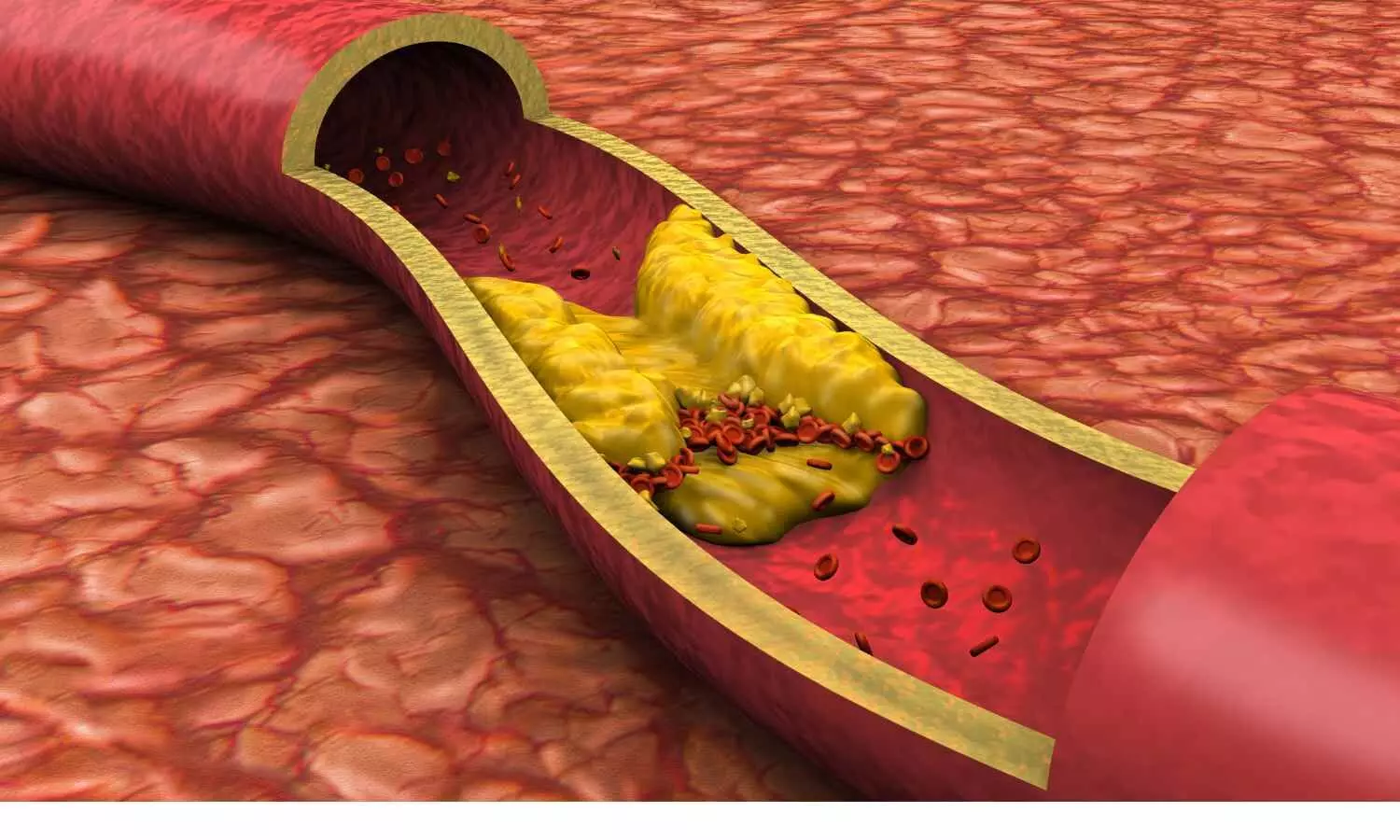Study links genetic variants to higher 'bad' cholesterol and heart attack risk
- byDoctor News Daily Team
- 03 November, 2025
- 0 Comments
- 0 Mins

An international team led by a University of Pittsburgh School of Medicine scientist has created a first-of-its-kind resource to identify those with a genetic risk for elevated ‘bad’cholesterol-- a major contributor to heart disease. Published today inScience, this resource can assist clinicians in predicting patient risk forheart attacksandstrokes, allowing time for prevention and early treatment. Heart diseaseremains the leading cause of death in the United States, claiming nearly 700,000 lives each year. While diet andexerciseplay a role, the risk of heart disease is largely dictated by genetic predisposition to the accumulation of waxy plaque inside the arteries that supply blood to the heart. This predisposition arises from minor variations in the gene that encodes the receptor for a sticky molecule known as LDL, or low-density lipoprotein, commonly referred to as bad cholesterol. “Even with normal LDL levels, a person might be at an elevated risk of a heart attack due to disease-causing variants in the LDL receptor,” said senior author Frederick Roth, Ph.D., professor and chair of computational and systems biology at Pitt. “By identifying damaging LDL receptor variants, clinicians can initiate preventive treatment early on and mitigate risks.” In healthy blood vessels, LDL acts as a shuttle, transporting bits of ‘good’ cholesterol—an essential component of cell membranes that is also important for food digestion and the production of hormones and vitamins, including vitamin D. However, genetic mutations that lower the amount or efficiency of the LDL receptor can lead to harmfully high levels of LDL. While modern gene sequencing technologies can read and decode a person’s entire genetic code from a small tissue sample within hours, interpreting such a vast amount of data is challenging, especially since the functional impact of most variations in the LDL receptor gene has previously been unknown. In their new paper, Roth and team classified nearly 17,000 modifications of the LDL receptor gene along with the corresponding changes in the LDL receptor protein structure. The resulting table measures each protein variant based on its mechanism of action and its impact on LDL clearance efficiency, providing clinicians with potentially actionable insights into their patients’ risk of elevated LDL. “New unclassified variants are seen all the time in the clinic, and we often don't have the evidence we need to inform patient care,” said study co-author Dan Roden, M.D., a clinician-scientist at Vanderbilt University Medical Center. “These variant impact scores have the potential to increase the number of diagnoses of familial high cholesterol for those with unclassified variants by a factor of ten.” This cholesterol-specific effort is a part of a broader research community initiative co-founded by Roth to map the functional effects of genetic variants across inherited disorders, called the Atlas of Variant Effects Alliance, which now includes more than 500 scientists from 50 countries, all working to build similarly comprehensive maps that evaluate gene variants known to affect risk of many diseases on a large scale. Similar to how identifying mutations in the BRCA1 breast cancer gene has saved many lives by predicting cancer risk early enough for prevention, the authors hope this resource will provide a powerful clinical diagnostic tool for heart disease. The study also identified a subset of LDL receptor variants for which the ability to take up LDL was inhibited by high levels of very low-density lipoprotein (VLDL), a larger precursor of LDL. “The influence of VLDL on LDL uptake was an unexpected finding. We’re excited about investigating this further and understanding potential implications for human health,” said lead author Daniel Tabet, Ph.D., of the University of Toronto. Daniel R Tabet et al. ,The functional landscape of coding variation in the familial hypercholesterolemia gene LDLR.Science0,eady7186DOI:10.1126/science.ady7186
Disclaimer: This website is designed for healthcare professionals and serves solely for informational purposes.
The content provided should not be interpreted as medical advice, diagnosis, treatment recommendations, prescriptions, or endorsements of specific medical practices. It is not a replacement for professional medical consultation or the expertise of a licensed healthcare provider.
Given the ever-evolving nature of medical science, we strive to keep our information accurate and up to date. However, we do not guarantee the completeness or accuracy of the content.
If you come across any inconsistencies, please reach out to us at
admin@doctornewsdaily.com.
We do not support or endorse medical opinions, treatments, or recommendations that contradict the advice of qualified healthcare professionals.
By using this website, you agree to our
Terms of Use,
Privacy Policy, and
Advertisement Policy.
For further details, please review our
Full Disclaimer.
Recent News
Gum disease could silently cause serious brain dam...
- 03 November, 2025
Can Early-Day Fasting Significantly Boost Metaboli...
- 03 November, 2025
Delhi HC bars doctor from running medical centre d...
- 03 November, 2025
Phase III data for Gazyva/Gazyvaro show significan...
- 03 November, 2025
Daily Newsletter
Get all the top stories from Blogs to keep track.


0 Comments
Post a comment
No comments yet. Be the first to comment!